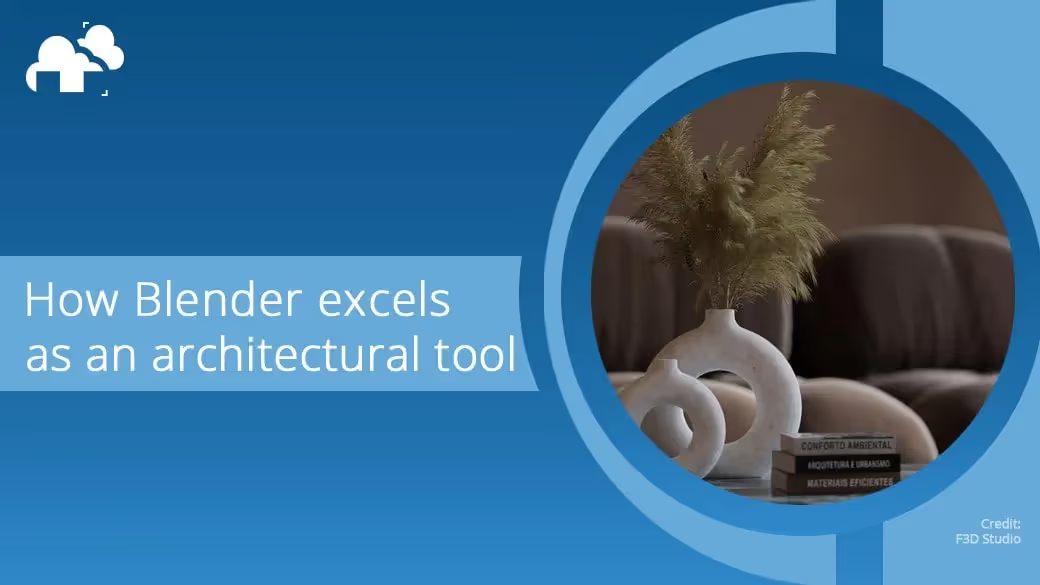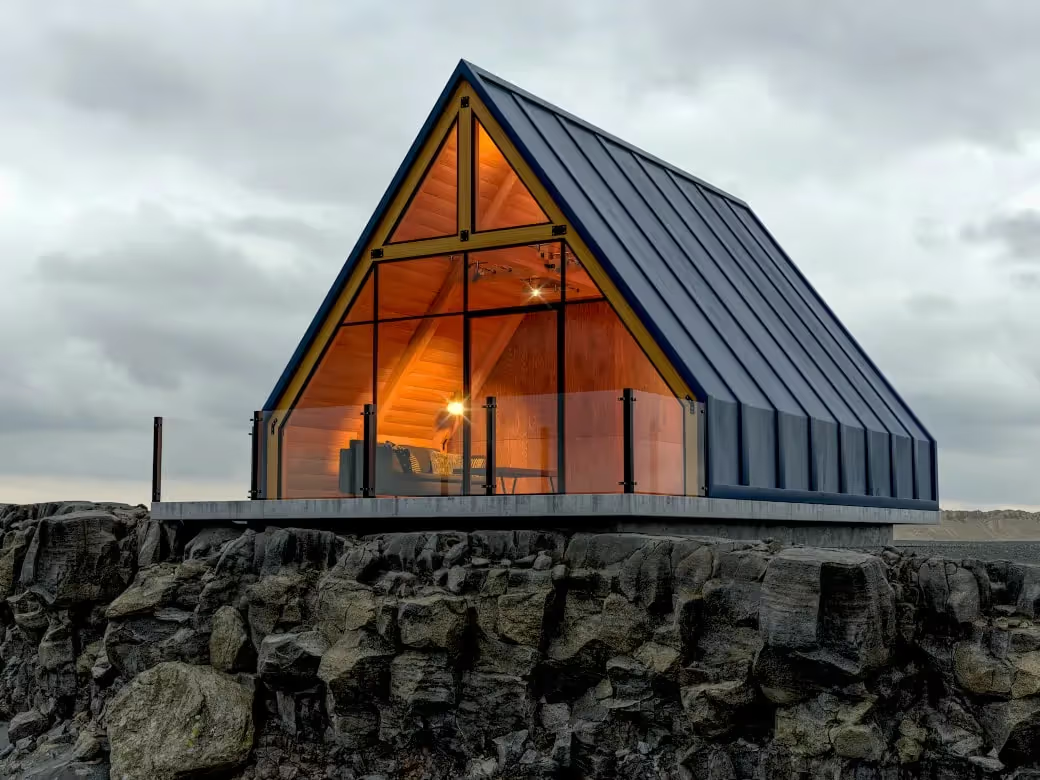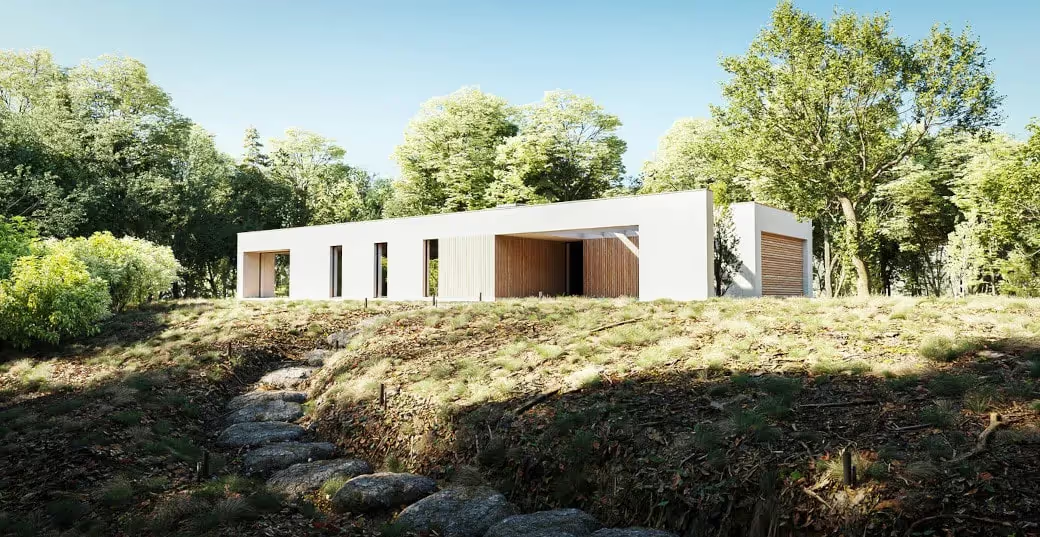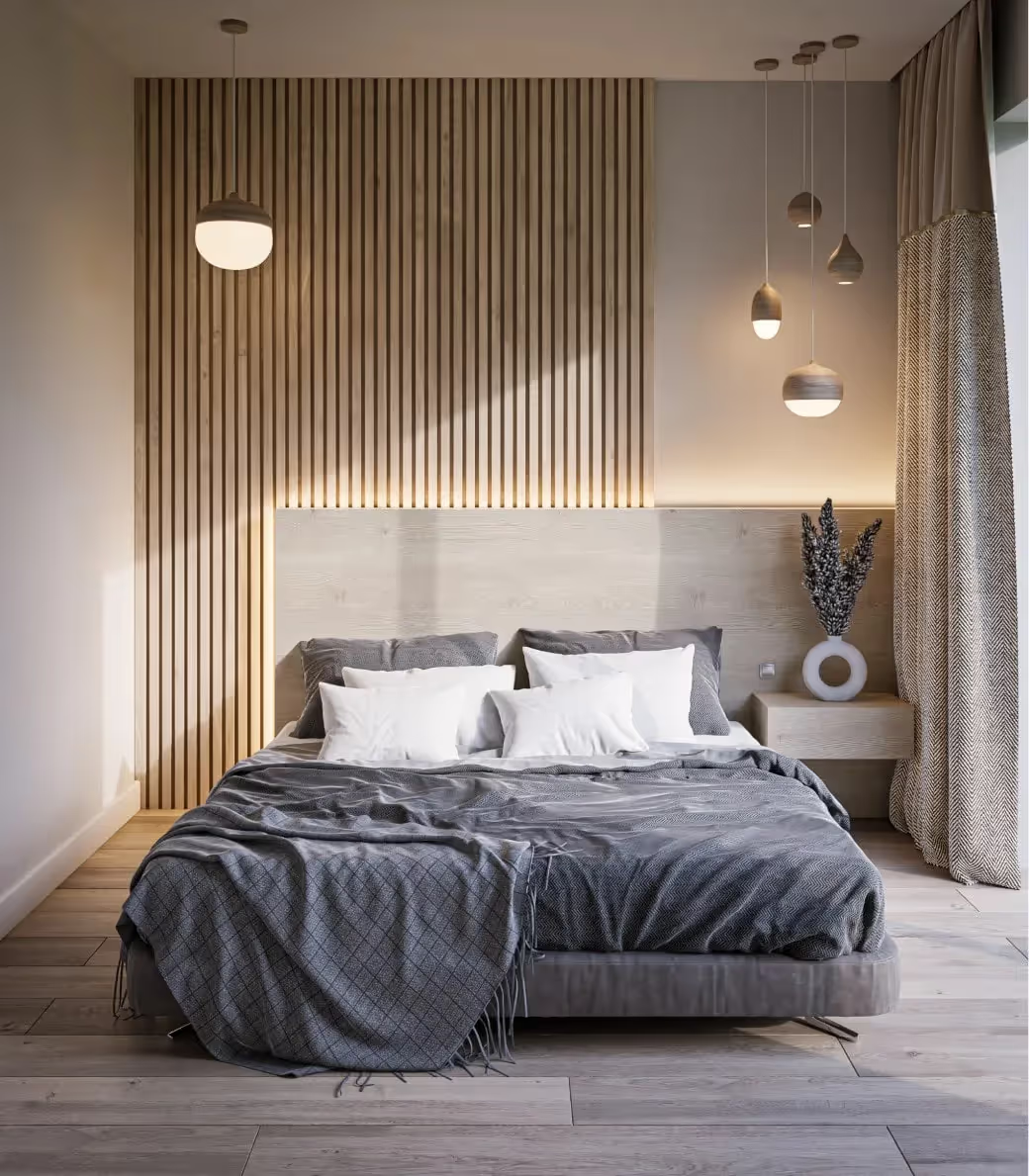
Before the time of 3D rendering, designers relied heavily on traditional hand-drawn illustrations to capture how their designs would look in the real world. These highly accurate drawings became the cornerstone of what 3D archviz is today. In fact, many firms still use 2D drafting as part of their creative process. But times have also changed; almost all architectural projects now utilize 3D rendering in some aspect of their pipeline, as access to 3D tools has made 3D visualization cheaper and easier. 3D visualization has opened the doors for next-level realism and the ability to preview buildings integrated into their environment through still frames, animations, and XR experiences.

Blender, the open-source 3D package, is one of the most popular and versatile tools available for architectural visualizations. It has a uniquely flexible feature set that has made the software an increasingly popular tool for visualizers. In this article, we look at what can be done with creating architecture in Blender and what it has to offer for designers, architects, and artists creating 3D visualizations. Blender is easily underestimated, but as you’ll see, it can be a great choice for architectural projects.
Starting with the obvious, Blender is a powerful tool for rendering. Blender supports a wide array of render engines, from photo-real renders like Cycles, Octane, and V-Ray to 2D toon rendering with Eevee, and Grease Pencil tools. Because Blender is open-source by nature, it supports a larger set of render engines than most 3D software, allowing artists to use the tool that best fits their needs. This aspect can also be beneficial when integrating Blender into a larger pipeline where a render engine may already be core to a team's workflow.

Apart from external renders, Cycles, Blender's built-in path-tracer, is a powerful visualization tool in its own right. With features like global illumination, path-guiding, caustics, and both CPU and GPU rendering, it's a great choice for rendering architecture in Blender. Additionally, Cycles supports 360 renderings for generating VR content. Cycles has been in development for over ten years now and is now one of the quickest photo-real renderers out there since the recent release of Cycles X, the latest optimization focused release of the engine.
When it comes to 2D rendering, Blender has slowly grown to have a strong 2D rendering feature set too, including line art rendering and tool-shading using either Cycles or in Eevee, Blender's real-time render engine. While 2D rendering may not be your primary need, it’s a convenient addition that yet again demonstrates Blender’s versatility for designers.

Blender's extensibility through add-ons also shouldn't be understated. Tools like Blender GIS, Archimesh, or Grasswald, to name a few, allow artists to bring entirely new feature sets into their workflow. Blender GIS integrates geographic information straight into the 3D viewport for visualizing buildings in real-world settings; Archimesh is an architectural design tool for easily building parametric architectural models; and Grasswald instances realistic foliage models directly into 3D archviz scenes. And that’s just to name three. There are hundreds of additional addons available across the web for all kinds of workflows and tasks.
It's clear that Blender has a great set of features. But how does it compare to the competition? Regarding drafting, Blender has a surprisingly good toolset for an artist-oriented program, including support for NURBs, complex measurements, and even parametric modeling through the CAD Sketcher add-on. However, it doesn't boast a toolset that can come close to the feature set of software like AutoCAD, Revit, or Rhino. It's the post-CAD steps where Blender really shines as a competitor against software 3ds Max, Cinema 4D, and Lumion.

While all of these tools are competent tools for archviz, what these tools lack is a concise and cohesive workflow. That's where Blender steps in as a great multipurpose tool for archviz that goes beyond simply modeling and rendering tools. Blender supports advanced sculpting and modeling tools, texturing painting, animation, and virtual reality content. It's possible to create complex scenes quickly and without jumping between a myriad of external tools.
Switching software can be difficult, but since Blender is both free and versatile, the process is less painful than most transitions. Being free, there's no need to account for additional costs or overlapping license agreements. Because of this, many studios choose to implement Blender into their pipeline over time, making the process less intrusive for designers still trying to hit deadlines during pipeline changes.

Blender is also a great choice for architects looking to expand their in-house offerings into 3D visualization. It's a lightweight yet professional tool for the visualization of CAD projects or mockups of in-progress designs. Having the ability to quickly render off visualizations without consulting outside studios or investing in licensed software can be a huge time and cost saver.
Furthermore, Blender's all-in-one workflow allows for quick and efficient modifications anywhere in the creative process. For example, if a project requires modifications to the overall structure of a building, you can change these features in real time without leaving the software or even the viewport. The same also applies to texturing and animation, limiting the amount of backtracking or re-exporting needed along the way.
As an open-source tool, Blender is also not only incredibly cost-effective to implement in a studio setting but also highly expandable and extensible. As already mentioned, Blender's community is constantly building new add-ons and tools that integrate with Blender for faster workflows and better renders.
So should you switch? Maybe. If you’re looking for a new tool or to take your first steps into visualization, then Blender is a great choice. If you rely heavily on CAD tools as the backbone of your workflow, then Blender may be better as an addition to your workflow, rather than a replacement.
While rendering architecture in Blender may not be the natural choice, it isn’t a bad one. Blender is truly more than the sum of its parts by providing a complete package of 3D tools and rendering options that can rival its competitors while being free and accessible for all. Its thriving community and strong add-on repository make it an unmatched tool in flexibility and extensibility for artists, designers, and architects from any background. No matter your goals, you should download Blender and give it a try! It may surprise you how useful it can be for the smallest, or largest of things.
If you’re interested in learning more about rendering architecture in Blender, check out our article on why you should learn Blender for archviz here, or check out our intro on how to use Blender here. And if you’re already using Blender for rendering visualizations, be sure to check out our Blender render farm and get 33% off all Blender rendering.